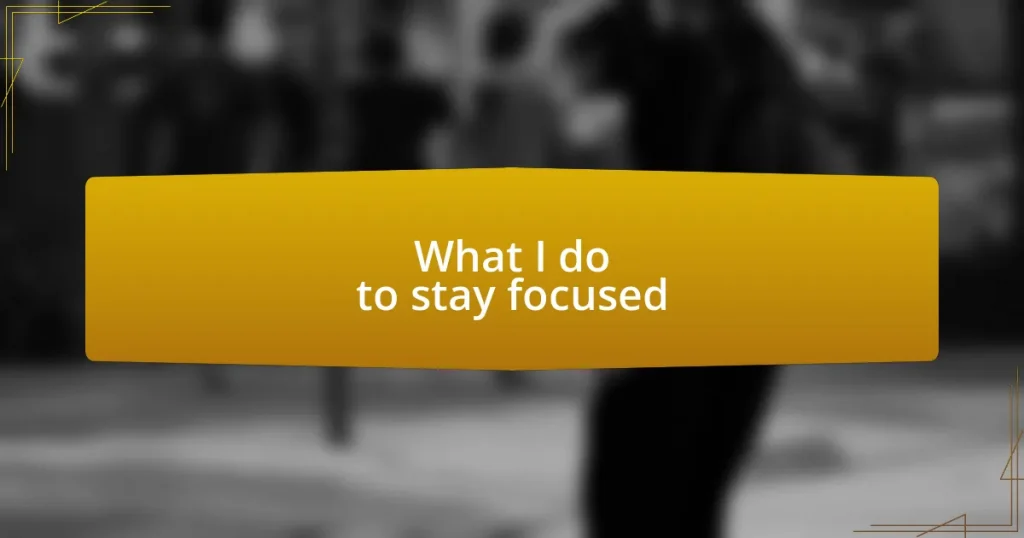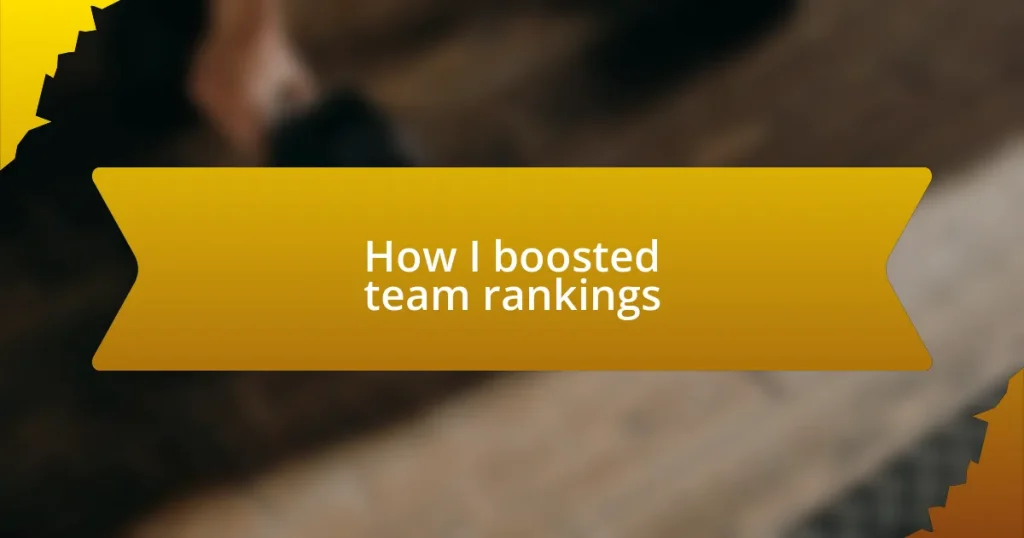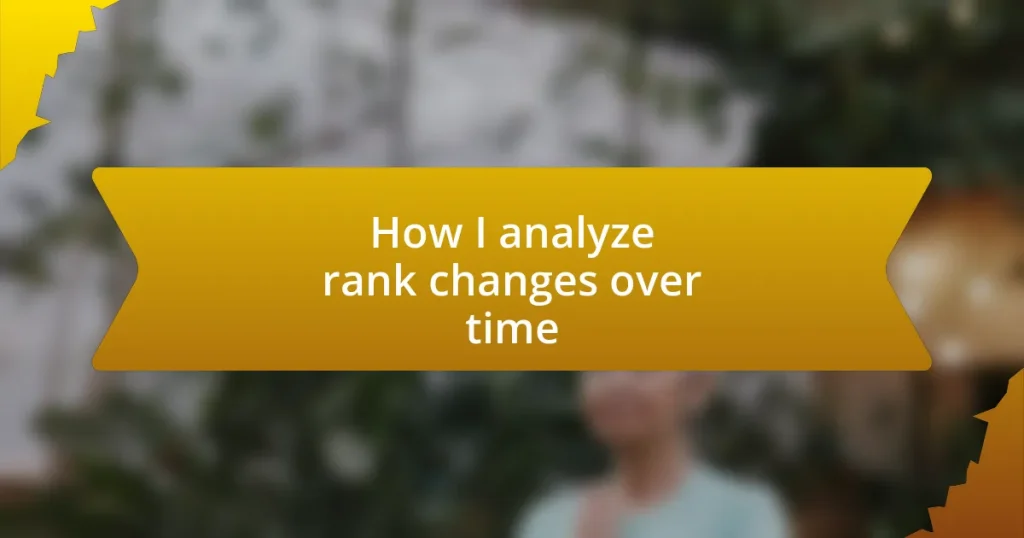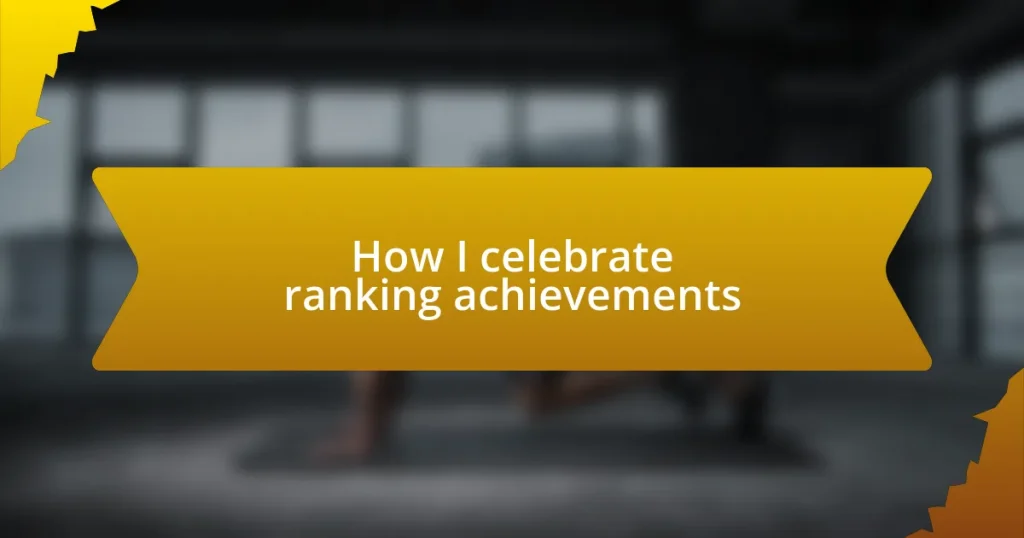Key takeaways:
- Establishing a clear routine enhances productivity by helping to identify peak times for focus and ensuring consistent engagement throughout the day.
- Creating a dedicated workspace minimizes distractions and fosters a mental association with productivity, boosting overall concentration.
- Implementing time management techniques, such as time blocking and the Pomodoro Technique, improves task completion efficiency and reduces overwhelm.
- Incorporating mindfulness and regular breaks into daily routines supports mental clarity and refreshes focus, leading to sustained productivity levels.
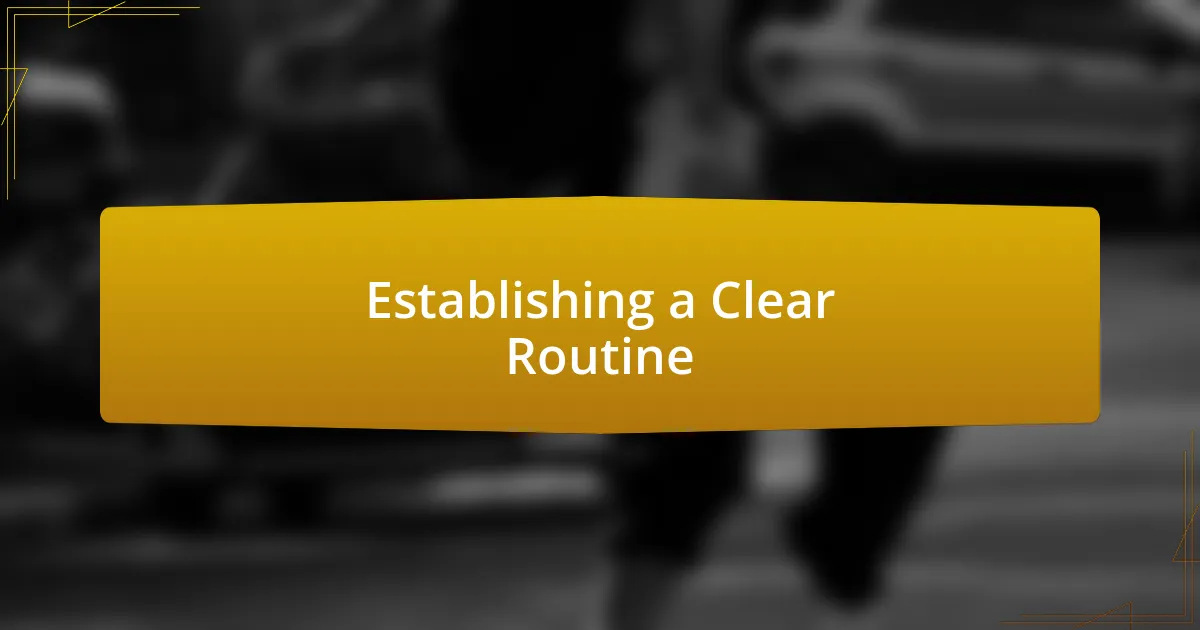
Establishing a Clear Routine
When I think about establishing a clear routine, I remember the days when I felt scattered and overwhelmed. It was in those moments that I decided to create a structured daily plan. This decision transformed my life; it helped me identify when I was most productive and when I needed breaks, leading me to not just work harder, but smarter.
Visualizing my day can be incredibly motivating. I often jot down my tasks the night before, allowing me to wake up with a clear purpose. Have you ever experienced that rush of excitement knowing exactly what you’re going to tackle? It sets the tone for the day and amplifies my focus—providing a sense of control that’s hard to replicate.
Another aspect I cherish is the consistency I’ve built around my routine. I’ve learned to anchor certain tasks to specific times, creating a rhythm that keeps distractions at bay. It’s comforting to know that at 9 AM, I’m diving into my most challenging work. This predictability helps me stay engaged and focused throughout the day. Have you tried anchoring tasks in your routine? It might just be the key to unlocking your productivity potential.
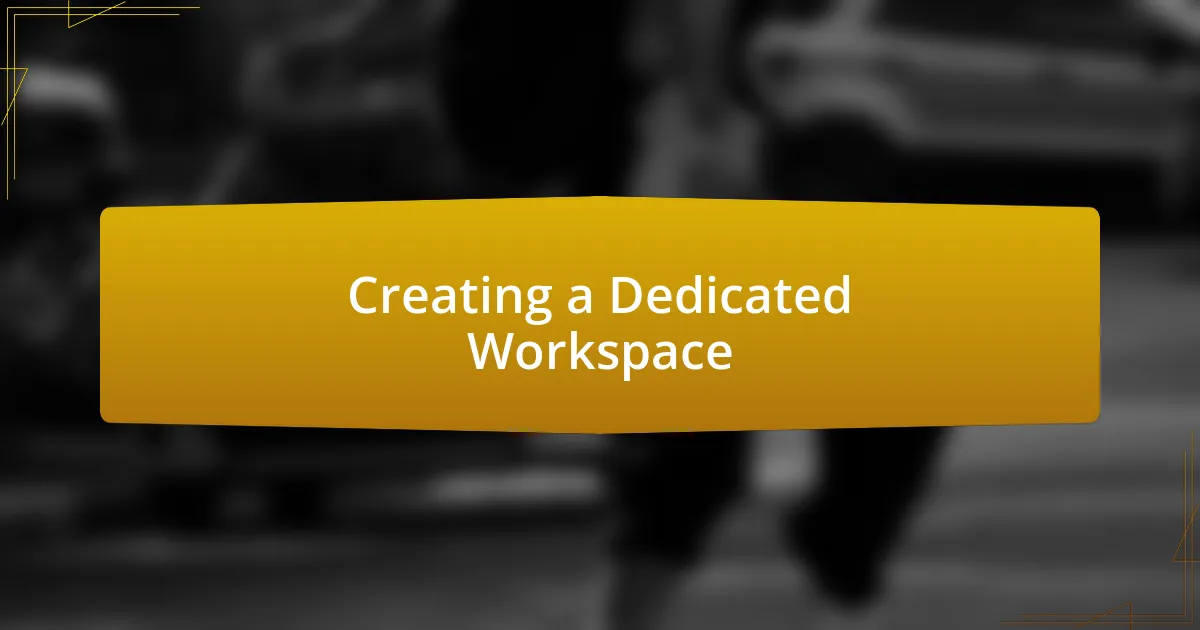
Creating a Dedicated Workspace
Creating a dedicated workspace has profoundly changed my ability to concentrate. I remember when I was working at my kitchen table, surrounded by distractions—dishes piled high, family conversations buzzing in the background. The moment I claimed a corner of my home as my workspace, everything shifted. I noticed that having a specific area meant my mind learned to associate that space with focus and productivity.
Here are some elements that define my dedicated workspace:
- Decluttered Desk: I keep only essential items on my desk to minimize distractions.
- Comfortable Seating: A good chair has made hours of work feel less taxing on my body.
- Proper Lighting: Natural light sources energize me and help reduce eye strain.
- Personal Touches: I add a few personal items, like photos or plants, that motivate me and create a pleasant atmosphere.
Each of these features plays a role in helping me cultivate a space that encourages deep work and creativity. Rather than feeling like an obligation, working in my dedicated area becomes a prime opportunity for growth.
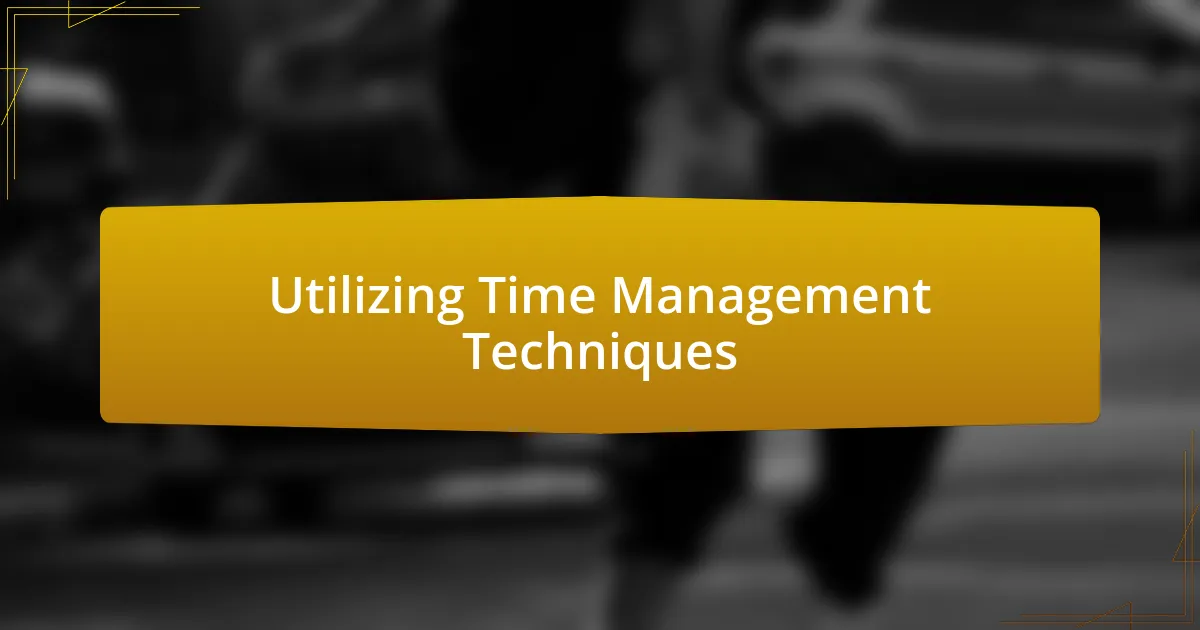
Utilizing Time Management Techniques
Utilizing effective time management techniques has transformed my productivity. I often find myself segmenting my day into focused blocks, a method I stumbled upon during a particularly chaotic week. By dedicating specific hours to tasks without interruptions, I realized how much I could accomplish in a much shorter time frame. It’s similar to the feeling of sprinting rather than jogging; the intensity helps you reach your destination faster.
I’ve also experimented with various techniques like the Pomodoro Technique, which involves 25 minutes of focused work followed by a short break. Initially, I was skeptical. However, once I tried it, I appreciated how refreshing those brief pauses could be. They not only rejuvenated my mind but also allowed creative ideas to flow during my breaks.
Furthermore, I keep a monthly calendar that includes both major projects and small tasks. This practice not only allows me to visualize my responsibilities but also gives me a sense of control over my workload. I remember weeks where I felt overwhelmed, but having that visual representation helped to prioritize my tasks, leading to less anxiety and increased focus each day.
| Technique | Description |
|---|---|
| Time Blocking | Allocating specific periods for each task throughout the day. |
| Pomodoro Technique | Work in 25-minute increments with short breaks in between. |
| Monthly Calendar | A visual overview of tasks and projects to prioritize effectively. |
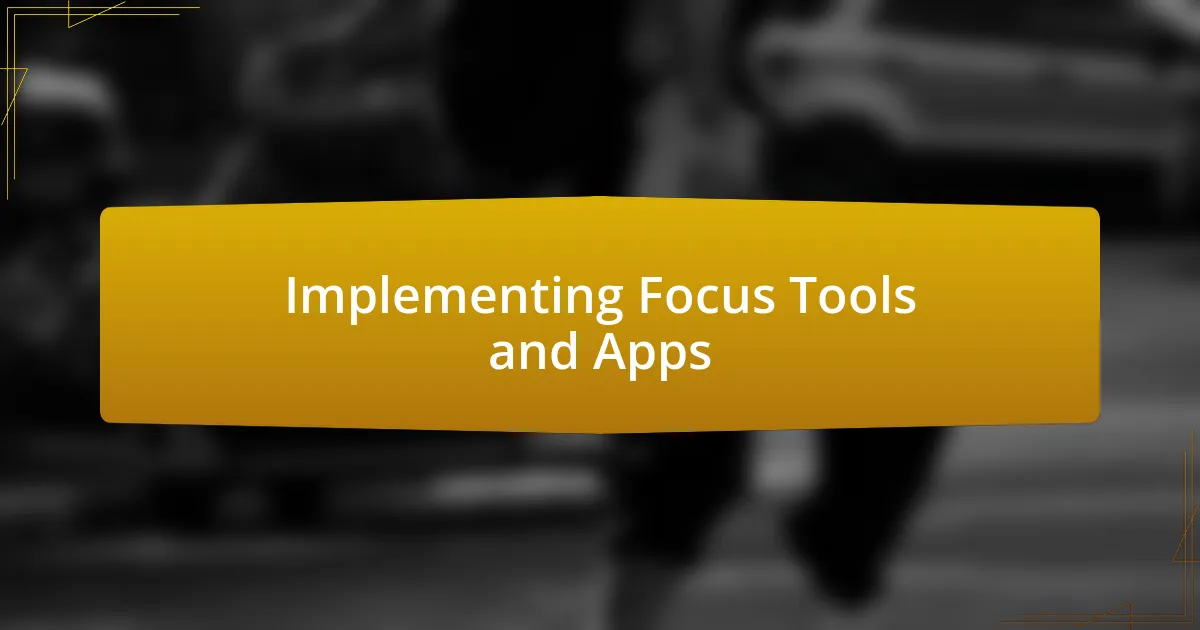
Implementing Focus Tools and Apps
When it comes to enhancing my focus, I often turn to specific tools and apps that keep distractions at bay. For instance, I discovered an app called Focus@Will, which plays instrumental music scientifically designed to boost concentration. Initially, I was skeptical about how music could impact focus, but I found myself diving deeper into my tasks without the usual interruptions. Have you ever been so absorbed in what you’re doing that time slips away? That’s the magic I found with it.
I also utilize task management apps like Todoist, which allows me to break down larger projects into manageable steps. By checking off tasks as I complete them, I not only see my progress but also feel a rush of accomplishment with each completed item. It’s satisfying, almost like crossing items off a to-do list on paper, but even more rewarding because of the digital feedback. Have any of you experienced that sense of triumph when you finish a task? It boosts my motivation tremendously.
Lastly, I’ve embraced focus timers, like Forest, which gamify the process of staying off my phone. Watching a virtual tree grow as I stay focused is surprisingly satisfying. This app aligns my desire for productivity with a fun, visual outcome. It’s as if each moment of concentration contributes to something greater—a virtual forest. Have you tried something similar? It reminds me that our focus shapes not just our productivity but also the little joys found in the process.
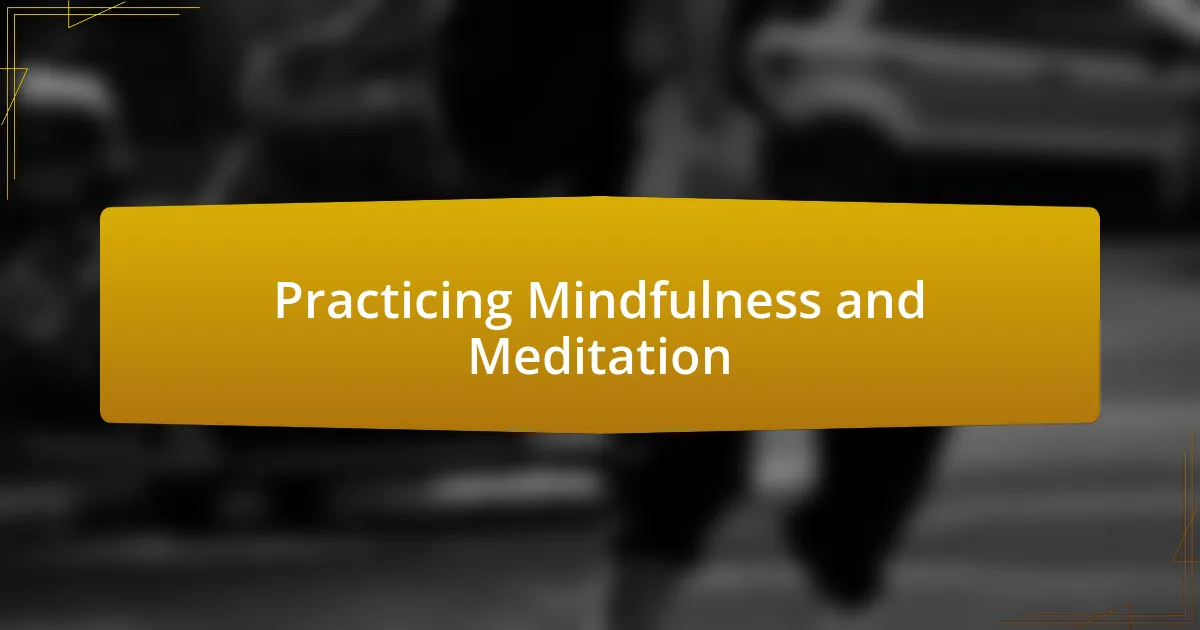
Practicing Mindfulness and Meditation
Finding mindfulness and incorporating meditation into my daily routine has truly transformed how I focus. I often set aside at least ten minutes each morning to practice deep breathing and mindfulness techniques. Closing my eyes and focusing on my breath helps clear away the mental clutter—have you ever noticed how scattered thoughts can pull you in different directions? This simple practice allows me to start the day centered and present, laying a strong foundation for my focus.
On days when I feel especially overwhelmed, I turn to guided meditation apps, like Headspace. I remember a particularly challenging week when I felt my productivity plummeting; a ten-minute session with soothing guidance and calming visuals helped me reframe my thoughts and find clarity. The experience was almost like hitting a reset button for my mind, allowing me to approach the rest of my tasks with renewed energy. Have you experienced a similar sense of relief from diving into a meditation session?
Moreover, I’ve realized that mindfulness extends beyond sitting quietly with my eyes closed. During routine tasks, such as washing dishes or walking, I try to remain fully present. Engaging my senses transforms mundane activities into moments of focus and tranquility. It’s amazing how simply being aware of my surroundings can recenter my thoughts. Don’t you think that being mindful in everyday tasks can be just as powerful as dedicated meditation?
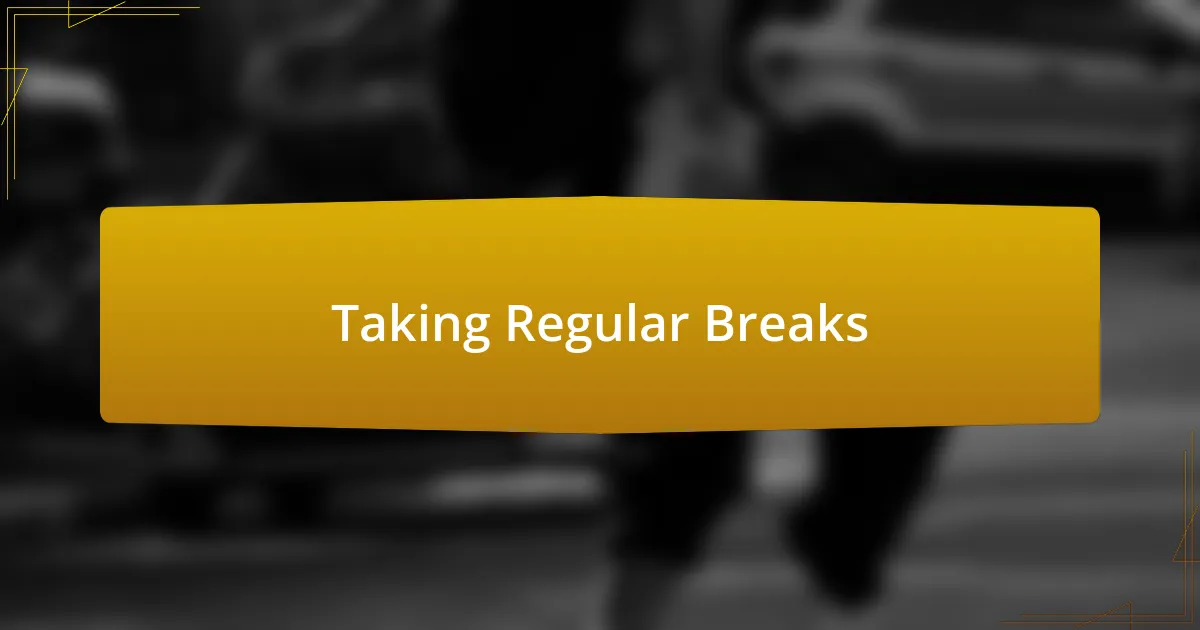
Taking Regular Breaks
Taking regular breaks is essential for maintaining focus throughout the day. I’ve found that stepping away from my desk, even for just a few minutes, refreshes my mind and boosts my productivity significantly. For instance, during a particularly intense work session, I made a habit of taking a five-minute walk every hour. It’s surprising how a short stroll can clear my head and spark new ideas.
I recall a time when I was deep in a project, and the hours were flying by without any breaks. My concentration started to fade, and I could feel the weight of fatigue setting in. I decided to step outside and breathe in some fresh air, and just that quick break shifted my perspective. Have you ever noticed how a change of scenery can rejuvenate your mental stamina?
Incorporating breaks into my routine isn’t just about stepping away; it’s also about shifting my mindset. Sometimes, I’ll take a break to enjoy a cup of tea, allowing myself to savor the moment rather than rush through it. This small act of self-care not only helps me recharge but also encourages me to be more productive when I return to work. What moments do you cherish during your breaks?
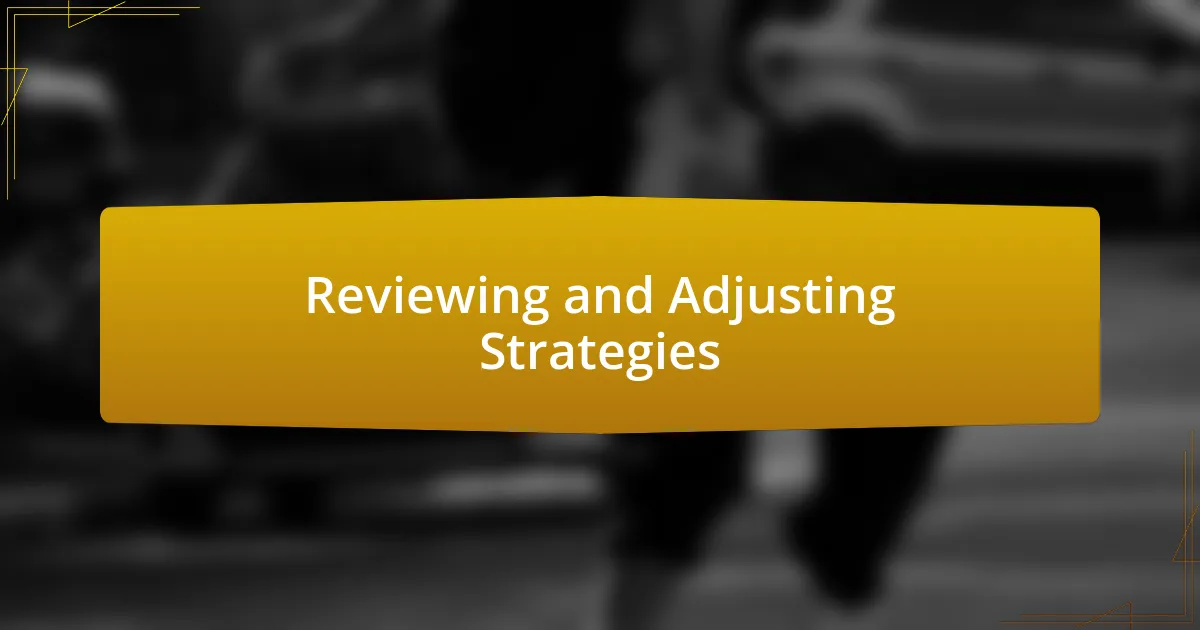
Reviewing and Adjusting Strategies
Reviewing and adjusting my strategies is something I do regularly to stay on track. I often assess what’s working and what isn’t, particularly after completing a project. I remember a time when I realized my late-night work sessions were not as productive as I’d hoped. I felt drained and frustrated. So, I decided to shift my focus to tackling complex tasks in the mornings when my mind is fresh. Have you ever reflected on your own productivity patterns?
Another critical aspect of this process is feedback. I make it a point to seek input from colleagues or mentors, as their perspectives can shed light on things I might have overlooked. There was a moment when I shared my approach with a peer, unaware that they had a similar struggle with focus. Their suggestions helped me refine my methods in ways I hadn’t considered before, like using specific tools for time management. This experience taught me how valuable others’ insights can be for personal growth.
Finally, I find it essential to be flexible. If a particular strategy is no longer effective, I don’t hesitate to try something new. For instance, I experimented with a digital planner when my handwritten notes started to feel overwhelming. This simple change led to improved clarity and organization in my tasks. What about you? Are there strategies you’ve abandoned or modified that have made a difference?










